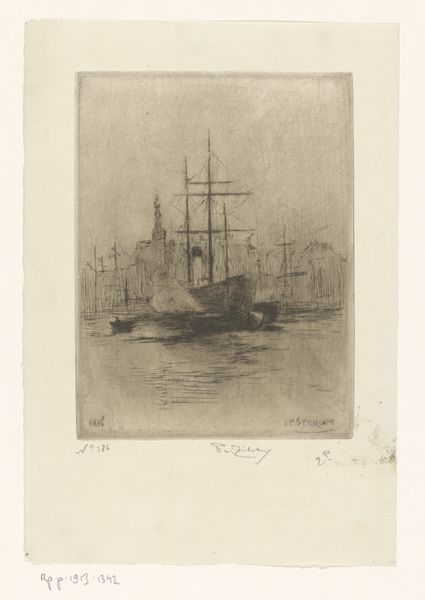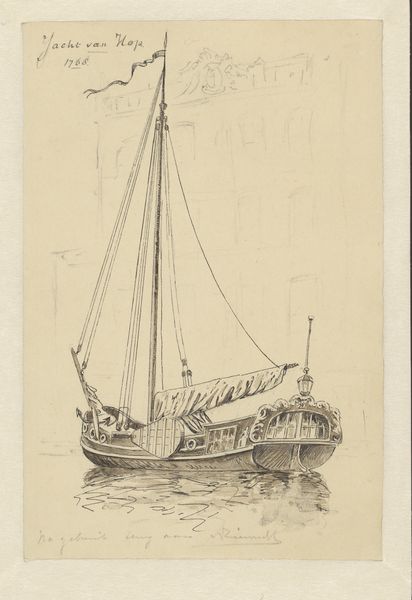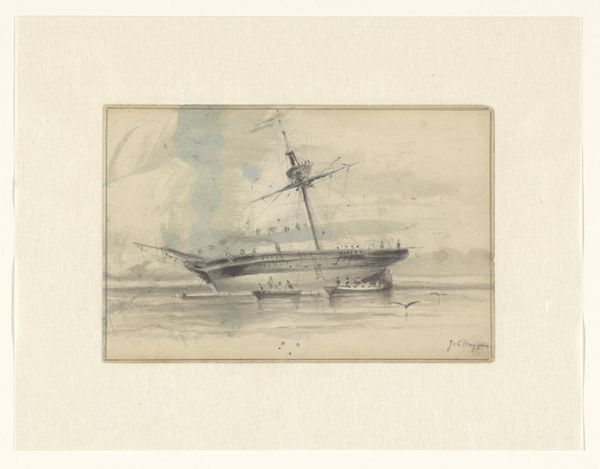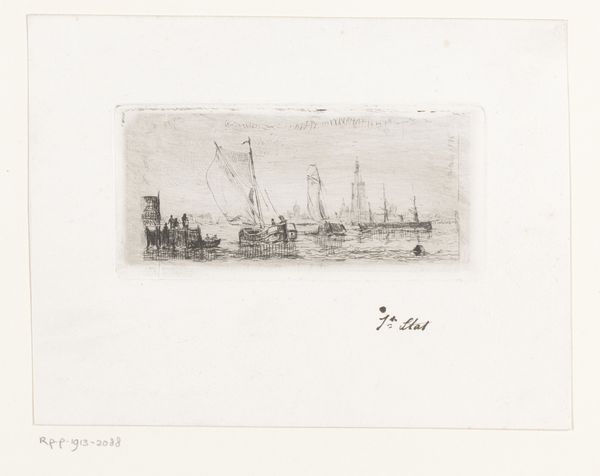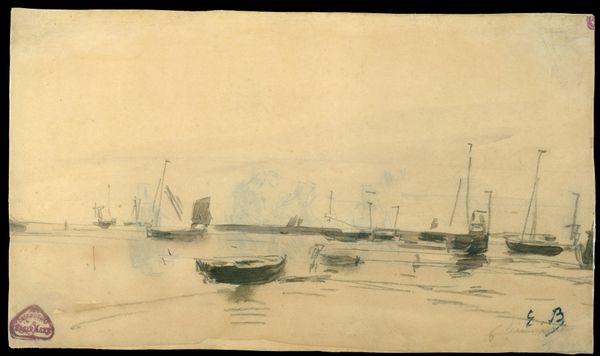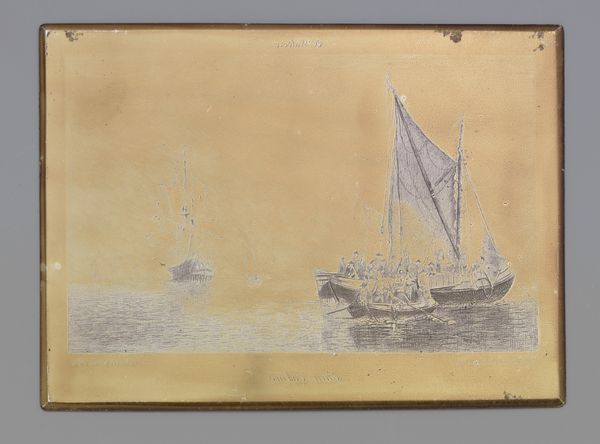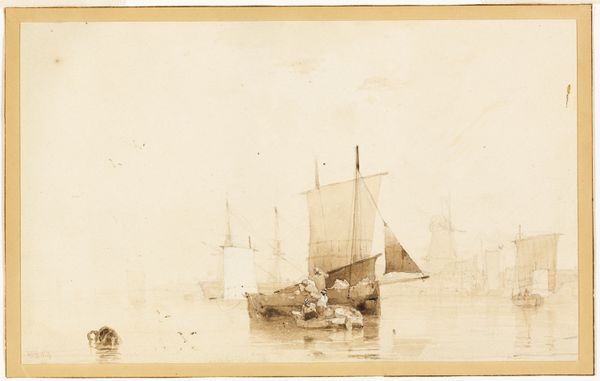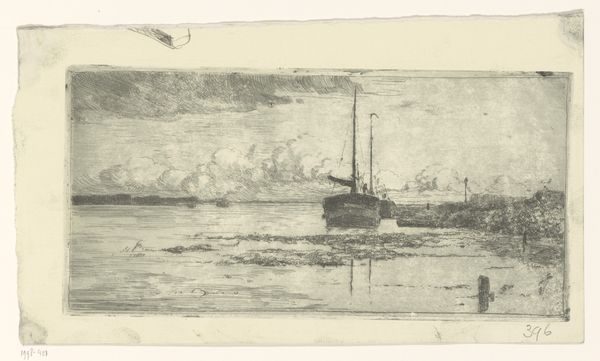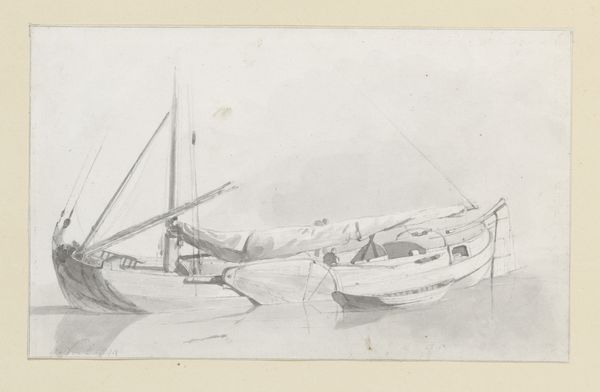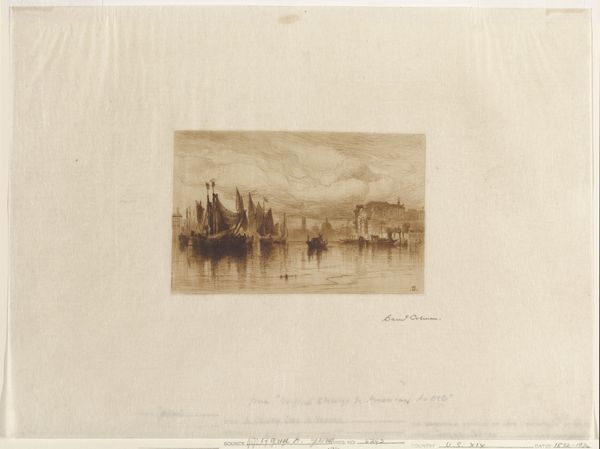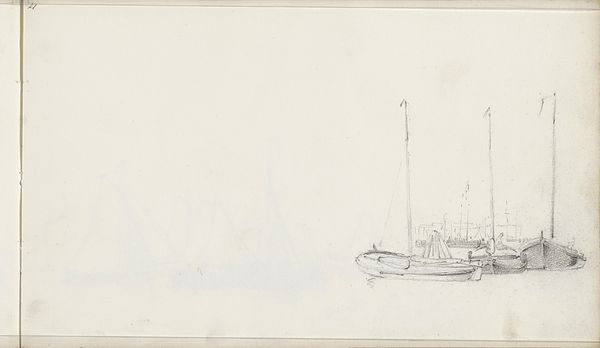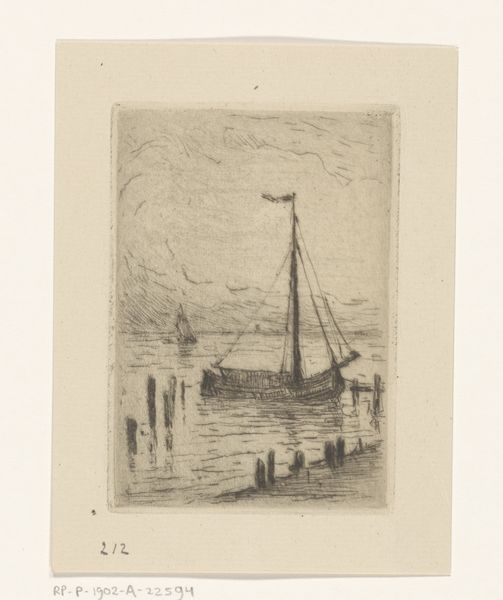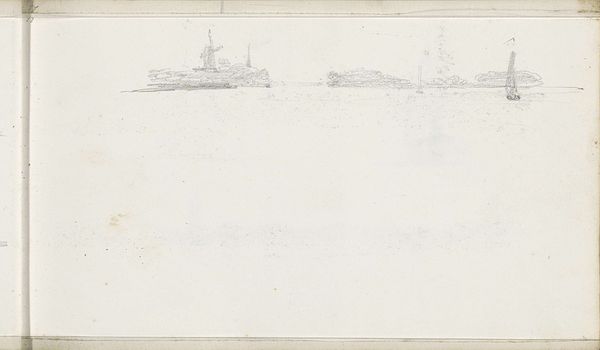
Dimensions: height 342 mm, width 213 mm
Copyright: Rijks Museum: Open Domain
Curator: This delicate watercolor is entitled "Stoomschip (fragment)," created by Jan van der Linde sometime between 1874 and 1923. Editor: It feels like a memory, softened and distant. The muted palette, the almost dissolving edges…there's a wistful quality to it. Curator: The image of a steamship, especially from this era, carries a potent weight, doesn't it? These vessels represented industrial progress, global trade, and also, often, colonial expansion. Editor: Absolutely. That smokestack becomes a symbol of power, of man's ambition, almost like a defiant pillar against a pale, indifferent sky. Curator: Van der Linde was working in a period where Impressionism was shifting the focus toward the subjective experience of the landscape, of modern life itself. The brushstrokes certainly suggest the influence of that movement, don't they? Editor: Yes, the indistinctness feels very much in keeping with Impressionistic ideals. The steamship is powerful, but this also feels like it is losing the battle with the environment around it, already slipping away. The watercolor bleeds out from under it almost like smog. The lack of firm outlines almost evokes a sense of entropy. Curator: That reading complicates the narrative a bit. Rather than simply celebrating technological achievement, van der Linde subtly implies its ephemerality, the ultimate triumph of nature. The ocean was viewed in this era as so vast, unconquerable, which offers a strong contrast with the mechanical steamship. Editor: It could also be interpreted as a comment on class, or on capitalism’s disregard for human impact. The boat moves quickly but leaves behind detritus. This art reflects anxieties in Europe during this era about its new identity, which speaks to ongoing social justice causes. Curator: That offers an entirely fresh, potent dimension to this artwork, particularly the visual impact. Editor: Exactly, the impact, both visual and theoretical. Thank you for highlighting these connections, it gives another lens through which we can study van der Linde's piece.
Comments
No comments
Be the first to comment and join the conversation on the ultimate creative platform.
